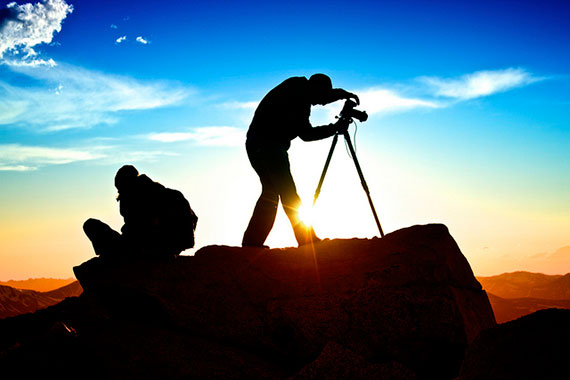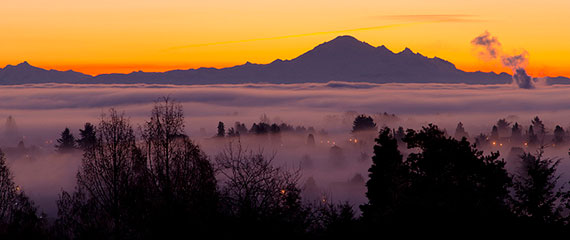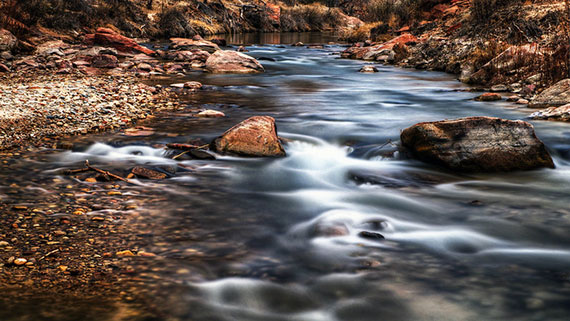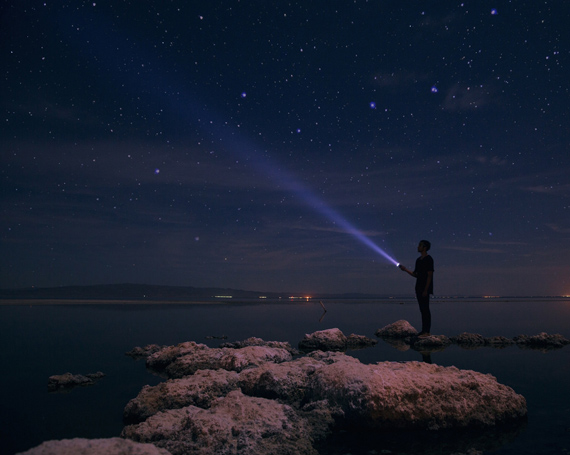Long exposure landscape photography can yield some amazing effects, but keeping the shutter open for extended period of time comes with many challenges. Here are some tips to get you started.
1. Three legs are better than two
A tripod is absolutely essential, but rather than running out and purchasing any old tripod, I strongly suggest saving up for a well-built model from a reputable tripod manufacturer. Gitzo and Manfrotto are two that spring to mind. A tripod that is poorly built or overly lightweight for your camera will be next to useless, as it will shake with any light breeze or even under the vibration of your camera’s shutter.

Photo by Zach Dischner; ISO 200, f/4.5, 1/1250-second exposure.
2. Use a low ISO
You may first think, “OK, low light. Let’s increase the ISO.” The unfortunate side effect of increased ISO is increased noise. Noise becomes a real issue when photographing with long exposure times, so keeping the ISO down is of great importance. Simply use a longer shutter speed instead, knowing that the camera is supported well on your solid tripod.

Photo by Gord McKenna; ISO 100, f/8.0, 1/150-second exposure.
3. Ever heard of a neutral density filter?
Available in a myriad of strengths and rated by how much light they cut, neutral density (ND) filters decrease the amount of light hitting your sensor whilst imparting no other changes in color temperature or visual quality. In practice, they often change the color temperature slightly; however, it’s nothing that can’t be fixed with white balance. Now let’s assume we are photographing a waterfall and we wish to render the water as a soft mist. First, you would select a low ISO and a small aperture in order to obtain the slowest shutter speed possible, yet the shutter speed may still be faster than you wish. Just pop on an ND filter to slow things down even more.

Photo by wbeem; ISO 200, f/11.0, 10-second exposure.
4. Film is not dead!
Well, for long exposure photography, it’s not. Unlike digital sensors, which develop unpleasant noise during long exposures, film handles long exposures nicely. One issue of note when using film for long exposure work is a bugger known as reciprocity failure. Basically, film loses sensitivity to light over the length of the exposure, and this must be compensated for. Find a reciprocity chart for the specific brand and type of film you’re using, make your exposure corrections, and Bob is your uncle, assuming you have an uncle named Bob, that is.
5. Guiding light
No, I’m not referring to a golden light emanating from the sky and leading you toward the path of forgiveness—that’s called acid and was big in the ’70s. What I’m referring to is a cheap, battery operated torch. Trust me when I say it’s an essential piece of kit. As you start shooting long exposure photos, you’ll start finding yourself in situations of fading light; a torch is a great asset to help you change camera settings and find your way out of locations in the dark.
About the Author:
Samuel Burns is an award-winning fine art, landscape, and Sydney wedding photographer.
Like This Article?
Don't Miss The Next One!
Join over 100,000 photographers of all experience levels who receive our free photography tips and articles to stay current:







I really like the Manfrotto 190XPROB with 498RC2 head setup- lighter than the 055XPROB but nice and sturdy and a very solid and functional head!
You should really have a red light, the bright white light will ruin your vision on night photography!